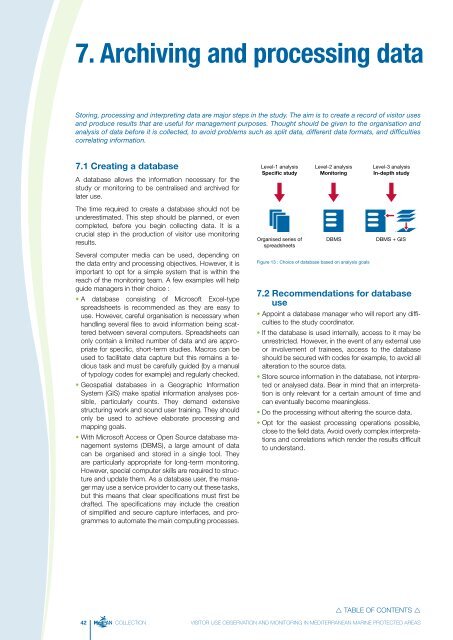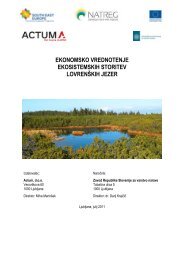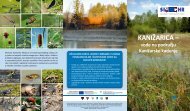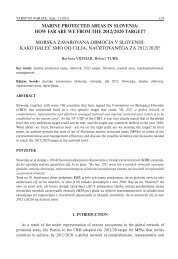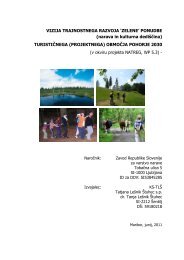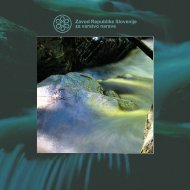Monitoring MPA visitor uses handbook
Monitoring MPA visitor uses handbook
Monitoring MPA visitor uses handbook
- No tags were found...
Create successful ePaper yourself
Turn your PDF publications into a flip-book with our unique Google optimized e-Paper software.
7. Archiving and processing dataStoring, processing and interpreting data are major steps in the study. The aim is to create a record of <strong>visitor</strong> <strong>uses</strong>and produce results that are useful for management purposes. Thought should be given to the organisation andanalysis of data before it is collected, to avoid problems such as split data, different data formats, and difficultiescorrelating information.7.1 Creating a databaseA database allows the information necessary for thestudy or monitoring to be centralised and archived forlater use.Level-1 analysisSpecific studyLevel-2 analysis<strong>Monitoring</strong>Level-3 analysisIn-depth studyThe time required to create a database should not beunderestimated. This step should be planned, or evencompleted, before you begin collecting data. It is acrucial step in the production of <strong>visitor</strong> use monitoringresults.Several computer media can be used, depending onthe data entry and processing objectives. However, it isimportant to opt for a simple system that is within thereach of the monitoring team. A few examples will helpguide managers in their choice :• A database consisting of Microsoft Excel-typespreadsheets is recommended as they are easy touse. However, careful organisation is necessary whenhandling several files to avoid information being scatteredbetween several computers. Spreadsheets canonly contain a limited number of data and are appropriatefor specific, short-term studies. Macros can beused to facilitate data capture but this remains a tedioustask and must be carefully guided (by a manualof typology codes for example) and regularly checked.• Geospatial databases in a Geographic InformationSystem (GIS) make spatial information analyses possible,particularly counts. They demand extensivestructuring work and sound user training. They shouldonly be used to achieve elaborate processing andmapping goals.• With Microsoft Access or Open Source database managementsystems (DBMS), a large amount of datacan be organised and stored in a single tool. Theyare particularly appropriate for long-term monitoring.However, special computer skills are required to structureand update them. As a database user, the managermay use a service provider to carry out these tasks,but this means that clear specifications must first bedrafted. The specifications may include the creationof simplified and secure capture interfaces, and programmesto automate the main computing processes.Organised series ofspreadsheetsDBMSFigure 13 : Choice of database based on analysis goalsDBMS + GIS7.2 Recommendations for databaseuse• Appoint a database manager who will report any difficultiesto the study coordinator.• If the database is used internally, access to it may beunrestricted. However, in the event of any external useor involvement of trainees, access to the databaseshould be secured with codes for example, to avoid allalteration to the source data.• Store source information in the database, not interpretedor analysed data. Bear in mind that an interpretationis only relevant for a certain amount of time andcan eventually become meaningless.• Do the processing without altering the source data.• Opt for the easiest processing operations possible,close to the field data. Avoid overly complex interpretationsand correlations which render the results difficultto understand. TABLE OF CONTENTS 42 COLLECTION VISITOR USE OBSERVATION AND MONITORING IN MEDITERRANEAN MARINE PROTECTED AREAS


